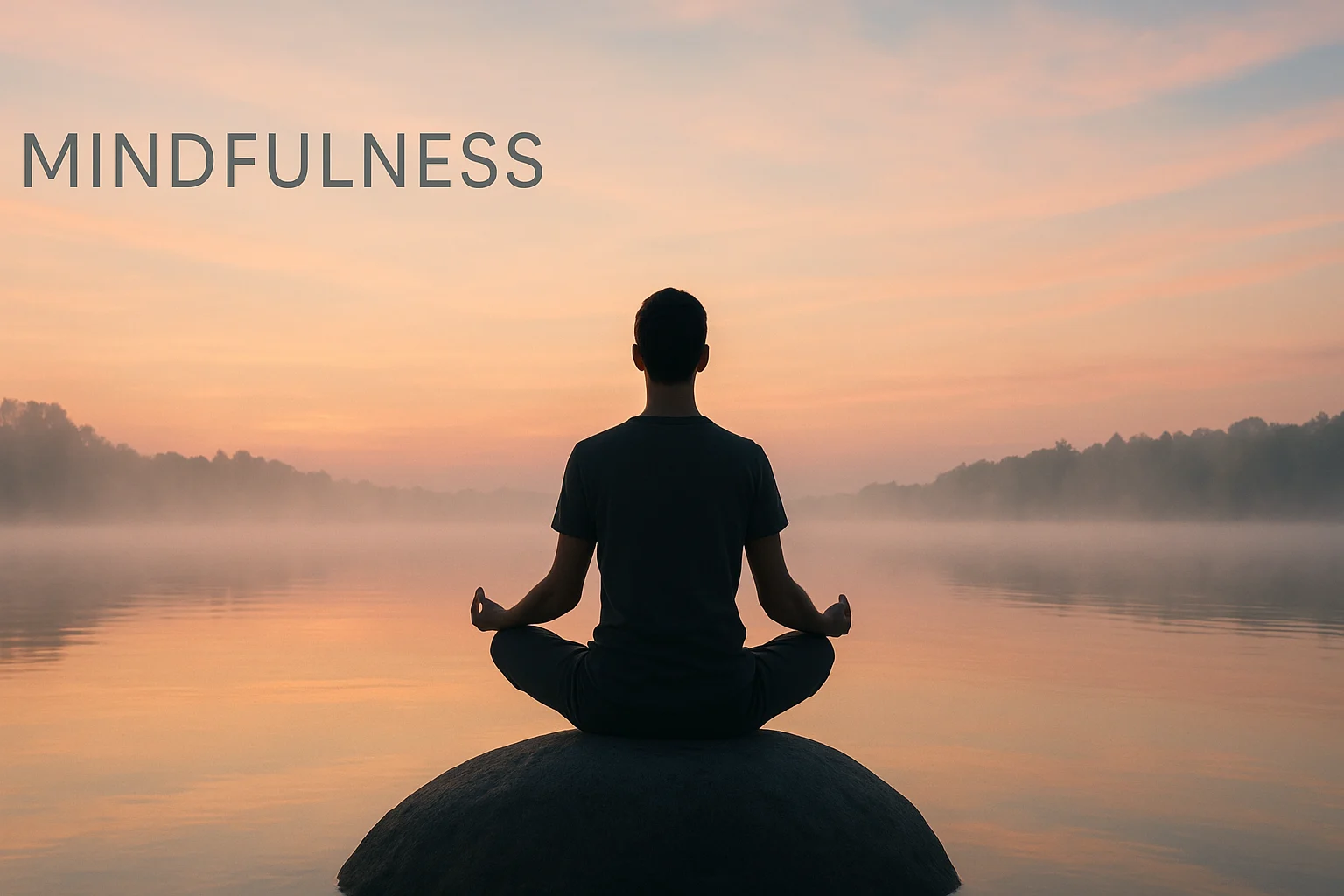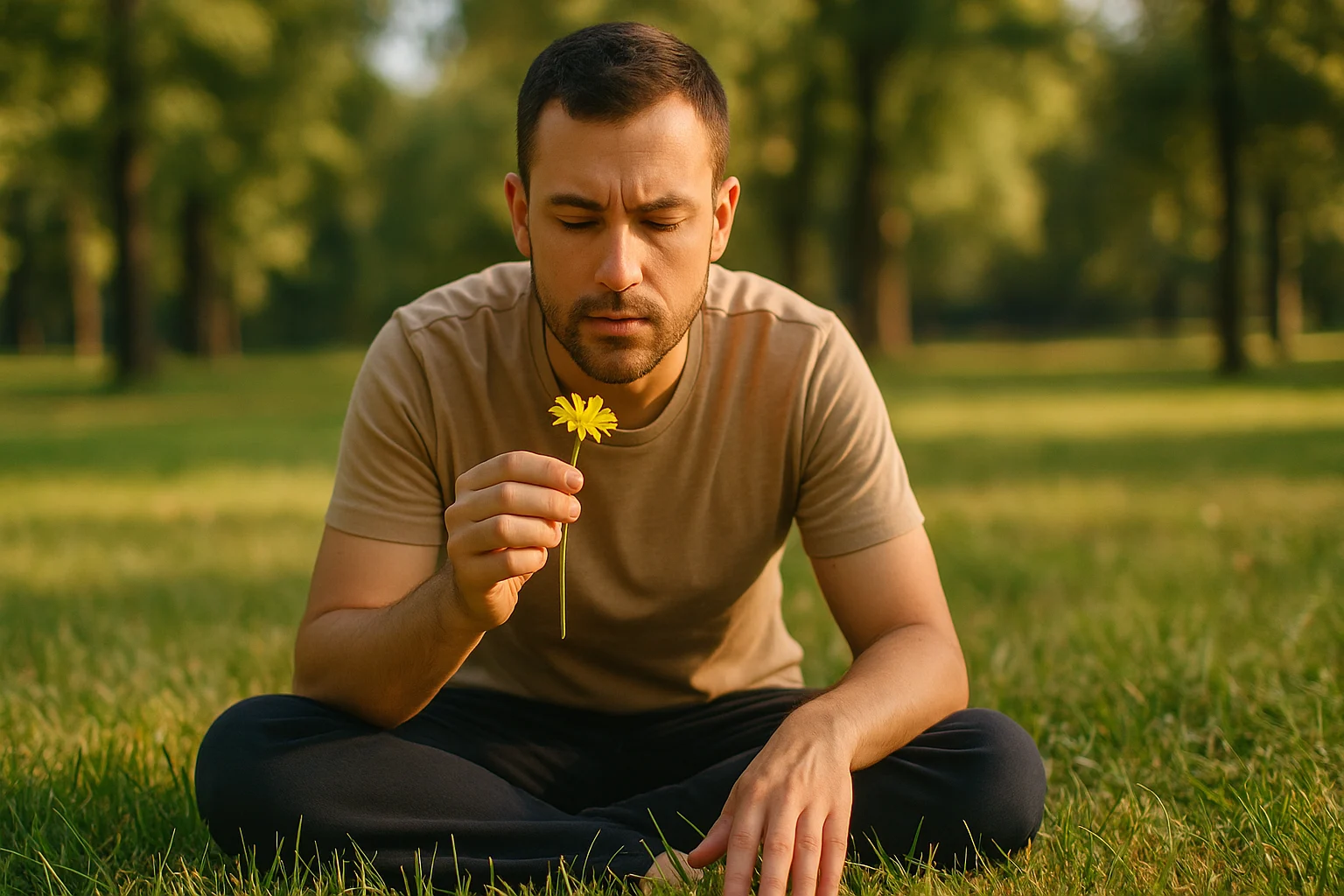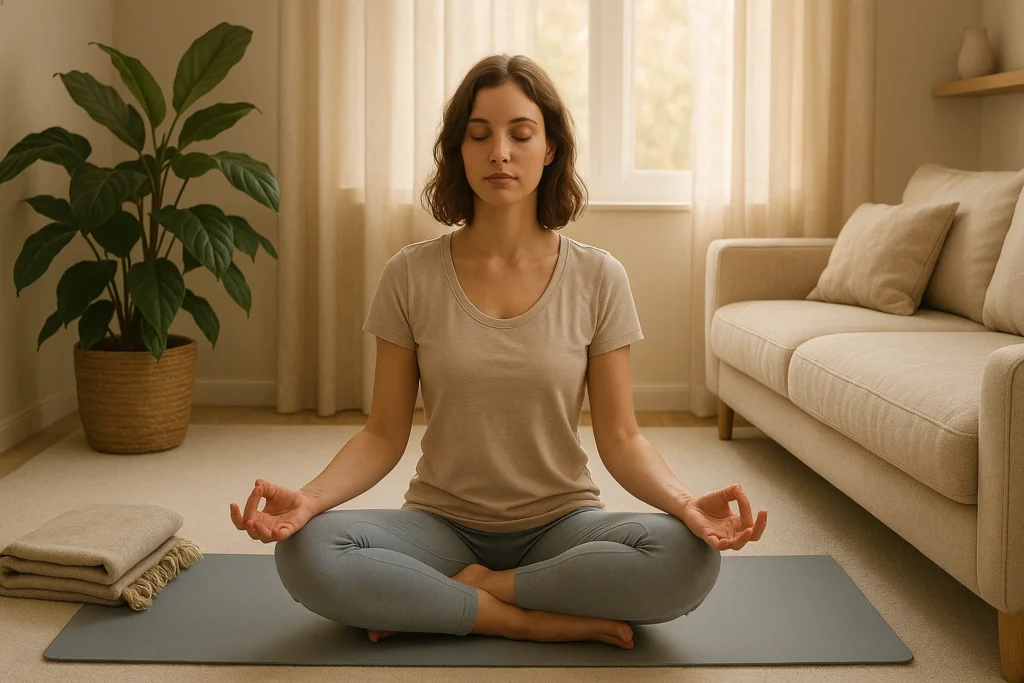
Feeling stretched thin by work or life? In about 60 seconds, mindfulness techniques for stress can help you steady yourself. I’ve been there—last week, a few slow breaths grounded me before a nerve-wracking meeting. Stress is everywhere these days, but small, simple practices can bring you back to center. For a deeper dive, explore our complete guide on mindfulness stress relief.
Find Your Calm Now!Table of Contents
Key Takeaways
- Mindfulness is about Presence: It’s the simple act of focusing on the present moment without judgment, helping to calm your mind and body.
- Science Suggests It: Studies suggest mindfulness may lower stress hormones, support attention and memory, and help with emotion regulation.
- Simple Techniques Work: Practices like mindful breathing, body scans, and grounding exercises are easy to learn and can offer immediate relief.
- Consistency is Key: Regular, even short, mindfulness practices build resilience against stress over time.
- No Special Tools Needed: Many powerful techniques can be done anywhere, anytime, using just your attention—and they bring the gift of mindfulness for calm.
What is Mindfulness Anyway? 🤔
First, let’s clarify what mindfulness is. At its core, mindfulness is about paying attention. It means intentionally focusing on the present moment—noticing sights, sounds, or feelings—without dwelling on the past or worrying about the future.
Picture your mind as a busy highway, with thoughts zooming by. Mindfulness doesn’t stop the traffic; it lets you step onto the shoulder and watch the cars pass without jumping in. This practice is especially helpful for stress relief, as it pauses the mental hamster wheel and reconnects you with the here and now.
“Mindfulness is paying attention in a particular way: on purpose, in the present moment, and non-judgmentally.”
— Jon Kabat-Zinn, founder of Mindfulness-Based Stress Reduction (MBSR)
Why Mindfulness Works: The Science Behind Stress Relief 🔬
Before we explore techniques, let’s understand why mindfulness is so effective. When stressed, your body triggers its “fight or flight” response, releasing hormones like cortisol, which can increase heart rate and tension. Chronic stress harms your health, but mindfulness may counter this by activating your “rest and digest” system. Here’s how:
- Lowers Cortisol: In a small 4-day program with 30 medical students, mindfulness meditation was associated with decreased serum cortisol, suggesting potential stress regulation benefits. View Study on PubMed.
- Brain Changes Reported: Research from Harvard-affiliated teams has reported gray-matter changes in regions tied to memory, attention, and emotion after mindfulness training, along with reduced amygdala reactivity in some studies.
- Boosts Emotional Control: Observing thoughts without judgment may help you respond to stress thoughtfully, not impulsively. This kind of mindful stress-reduction approach teaches your brain to shift out of survival mode into calm awareness.
- Improves Focus: Regular mindfulness meditation is linked with stronger attention, which helps you stay present.
This post has affiliate links. We may earn a commission. Learn more.

Mindfulness Techniques for Stress: Top Exercises
Now, let’s get to the heart of this guide: techniques to manage stress with mindfulness. Each method below is simple, effective, and designed for use anywhere. These practices are part of a broader set of stress relief exercises that can help reduce mental and physical tension.
1. Mindful Breathing for Stress Relief 🌬️
What It Is
Mindful breathing, a cornerstone of mindfulness meditation, involves focusing on your breath’s natural rhythm. Your breath is always available and can help settle your nervous system. For more on combining breath with movement, explore yoga-based breathing exercises.
How to Do It
- Find a comfortable spot: Sit or stand, eyes closed or softened.
- Notice your breath: Feel it in your nostrils, chest, or belly without controlling it.
- Follow the cycle: Observe the inhale, pause, exhale, and pause again.
- Redirect wandering thoughts: Gently return to your breath when your mind drifts.
Practice for 1-5 minutes, extending as you’re comfortable.
When It’s Most Effective
- Immediate calm: Use during overwhelm or anxiety.
- Before tasks or sleep to center yourself.
- Anywhere—desk, traffic, or grocery line!
2. Body Scan Meditation for Stress Relief 🧍
What It Is
A body scan involves focusing on different body parts, noticing sensations like tension or warmth. It’s great for releasing stored stress.
How to Do It
- Relax in a quiet space: Lie down or sit, eyes closed.
- Start with your toes: Notice sensations without judgment.
- Move upward slowly: Scan feet, legs, torso, arms, and head.
- Breathe into tension: Imagine exhaling tightness away.
Rest for a moment after scanning, feeling your whole body.
When It’s Most Effective
- Chronic stress: Releases long-held tension.
- Before bed for deep sleep.
- After a long day or when feeling disconnected.
3. Five Senses Grounding for Stress (5-4-3-2-1) 🖐️👃👂👀👅
What It Is
This technique pulls you into the present by engaging your senses, perfect for breaking anxious thought spirals. It’s especially useful for intense moments, much like mindfulness for panic attacks.
How to Do It
- 5 Things You See: Name details (e.g., wall texture).
- 4 Things You Feel: Notice your chair, clothes, or air.
- 3 Things You Hear: Identify sounds like traffic or breathing.
- 2 Things You Smell: Notice or imagine scents.
- 1 Thing You Taste: Focus on a lingering taste.
When It’s Most Effective
- Panic or anxiety: Can help ground you quickly.
- In busy settings like offices or public transport.
- Before or after stressful events.
4. Guided Imagery for Stress Relief 🏞️
What It Is
Guided imagery uses your imagination to create a calming scene, shifting focus from stress to mental peace.
How to Do It
- Find a quiet spot: Sit or lie down, eyes closed.
- Imagine a peaceful scene: Picture a beach, forest, or cozy cabin—a perfect way to use mindfulness for calm in just a few minutes.
- Engage senses: See colors, hear sounds, feel textures.
- Stay with it: Spend 5–15 minutes in the scene, letting your body soften.
When It’s Most Effective
- Before bed to ease occasional sleeplessness.
- When managing discomfort or feeling stuck.
- Ahead of stressful moments to rehearse calm.
5. Mindful Walking or Stretching for Stress Relief 🚶♀️🤸
What It Is
Mindful movement simply means paying close attention as you walk or stretch—linking gentle motion with mindfulness meditation. For a deeper dive, try mindfulness walking meditation.
How to Do It (Mindful Walking)
- Walk slowly: Feel your feet touching the ground.
- Notice your body: Sense your arms, legs, and gait.
- Engage senses: Observe sights and sounds without judgment.
- Redirect thoughts: Return focus to movement.
How to Do It (Mindful Stretching)
- Start gently: Begin with a neck roll or a light arm stretch.
- Feel sensations: Notice muscle stretch or release.
- Breathe with movement: Exhale into deeper stretches.
When It’s Most Effective
- Restlessness: Helps release nervous energy.
- After sitting or when you want a mood lift.
- As part of a morning routine for a calmer start.
6. Loving-Kindness Meditation for Stress 🧡
What It Is
This practice invites you to send kind wishes to yourself and others, which can foster emotional resilience and ease stress.
How to Do It
- Sit comfortably: Close your eyes and breathe deeply.
- Repeat phrases: Silently say, “May I be happy, may I be healthy, may I be at peace.”
- Extend to others: Include loved ones, acquaintances, or even difficult people.
- Feel the warmth: Notice feelings of kindness spreading.
When It’s Most Effective
- Emotional stress from relationships.
- Building long-term resilience.
- After conflict to restore calm.
Integrating Mindfulness Techniques for Stress into Your Daily Life 🗓️
You’ll notice the biggest benefits when you weave these techniques into your day. Here’s how to make it stick:
Stress Reduction Mindfulness: Start Small and Stay Consistent
Even a minute or two of mindful breathing each day can help. Consistency beats duration, so pick small practices you can repeat.
Anchor to Routines
- Breathe mindfully while your coffee brews. ☕
- Walk mindfully on your commute.
- Try a body scan before bed.
Overcoming Common Challenges
Struggling to focus? Totally normal. When your mind wanders, steer it back gently. Unsure about mindfulness? I was too—after a week of five-senses grounding, I noticed a real shift in my stress levels.
Use Reminders
Set phone alarms for quick mindful pauses throughout the day. Over time, these moments build a calmer mind.
Pick Your Practice: An Interactive Tool
Choose the best mindfulness technique for you based on your stress level and available time.
Find Your Mindfulness Technique 🌿
Select your stress level and time to get tailored suggestions.
Your suggested techniques will appear here. 😊

Frequently Asked Questions
Conclusion: Mindfulness for Calm ✨
Stress is part of life, yet it doesn’t have to run the show. By practicing these methods—like breathing, grounding, or visualization—you can build a steadier baseline. With stress reduction mindfulness tools that fit your day, start small, stay patient, and watch your relationship with stress shift.


